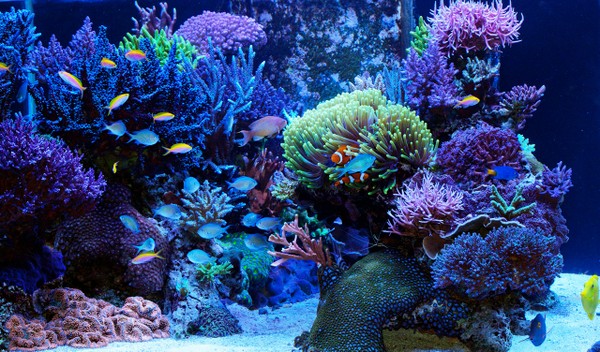revhtree
Owner Administrator
View Badges
Staff member
Super Moderator
Reef Squad
Partner Member 2024
Excellence Award
RGB
Photo of the Month
Article Contributor
R2R TV Featured
Hospitality Award
Article Administrator
Black Friday Sponsor
Partner Sponsor 2023
Industry Professional
My Aquarium Showcase
- Joined
- May 8, 2006
- Messages
- 47,862
- Reaction score
- 88,041
An amazing selection of livestock at Greenwich Aquaria (Riverside, CT) ... but how do you decide?
Husbandry: Fish Selection and Companionability
By Matthew Stansbery
Reprinted with permission from Advanced Aquarist
Practiced for thousands of years as a direct result of the domestication of animals, “husbandry†is now a modern term new and seasoned hobbyists hear when considering a marine aquarium. The proper selection of your fish, invertebrates, and coral can vastly increase the overall health and appearance of your tank as well as significantly influence the well being of each specimen it contains. This in turn can improve the capacity of vital aspects of your aquarium like the lifespan of each inhabitant, fish and invertebrate interaction, coral growth, coral color and reproduction.
There are quite a few published references concerning this term and its meaning within the marine and reef aquarium hobby so I will limit my definition simply to a compatible selection of your living and amalgamated inhabitants.
So what does the term “husbandry†mean when a new hobbyist is deliberating between fish, invertebrate and coral selection? One can easily be distracted at the local fish store by the amazing colors and potentially inaccurate displays of activity, so the beginning article of this multi-part series has been written to assist the new hobbyist in their selection of fish in order to help maximize the proper interaction among species, reduced levels of stress, and overall health of your tank.

Joe Peck's inspiration 240 gallon reef: a beautiful, harmonious balance of fish, coral, and invertebrate.
Fish Selection and Companionability
Almost every website that sells marine fish will provide general descriptions of the origin, diet, and other environmental requirements, but it is hard to find one that will tell you how compatible a species is with another.
The vast levels of color, sizes and shapes of saltwater fish will captivate most new hobbyists when they first start visiting their local fish store. This scenario can make it very easy to introduce incompatible species of marine fish, coral and invertebrate to the tank so it is necessary to do a little research beforehand. For a general compatibility reference between families of marine fish, I recommend the use of the term “Marine Compatibly Chart†in your internet search. This term can simply be plugged into your search bar to produce numerous links and images of a chart that lists the family (and in some cases the subfamily names) of marine aquarium fish. This chart will tell you whether or not a particular species of fish is suitable to be housed with another species of fish and it is great reference point to use at anytime during your selection process.
It is important to learn that some species of marine fish are extremely sociable and companionable so the proper fish husbandry can lead to interesting day to day interactions and an overall reduced level of stress for each fish. Now hopefully your local fish store can aid in your selection of fish, but if you find that source of information to be questionable or lacking in any way, something as simple as using key terms and phrases in your internet research can vastly improve your chances of selecting the right kind of inhabitants for your tank.
Most of the species of fish found at your local fish store have a common reference name; for example, the “clown fish†is actually from the subfamily Amphiprioninae and in the family Pomacentridae. Now you don’t have to know this, nor use a scientific family name when doing your research, but it can help when getting really specific and alleviate apprehensions about differing descriptions or recommendations from various sources.
A great example of natural interaction between fish and its environment would be the very common Blue/Green Reef Chromis (Chromis Viridis). These shoaling fish are found in the wild, swimming between the branches of small polyp stony corals. Not only does the colony of coral provide shelter for the fish from predators but the presence of the fish between the coral branches also helps to clean detritus that would otherwise, if settled for too long, cause necrosis on the coral. So here we see a scenario where both fish and coral benefit from being in close proximity to each other. It is this natural interaction that we are trying to achieve; one where your fish, coral and invertebrates exhibit biologically normal behaviors.
Next week we will talk more about this concept of housing coral and fish together in a mixed reef environment to discover how the interactions between your fish and coral can be either advantageous or destructive.
R2R Note: Thank you to Advanced Aquarist for providing this article to our community. Husbandry: Fish Selection and Companionability
Last edited:











